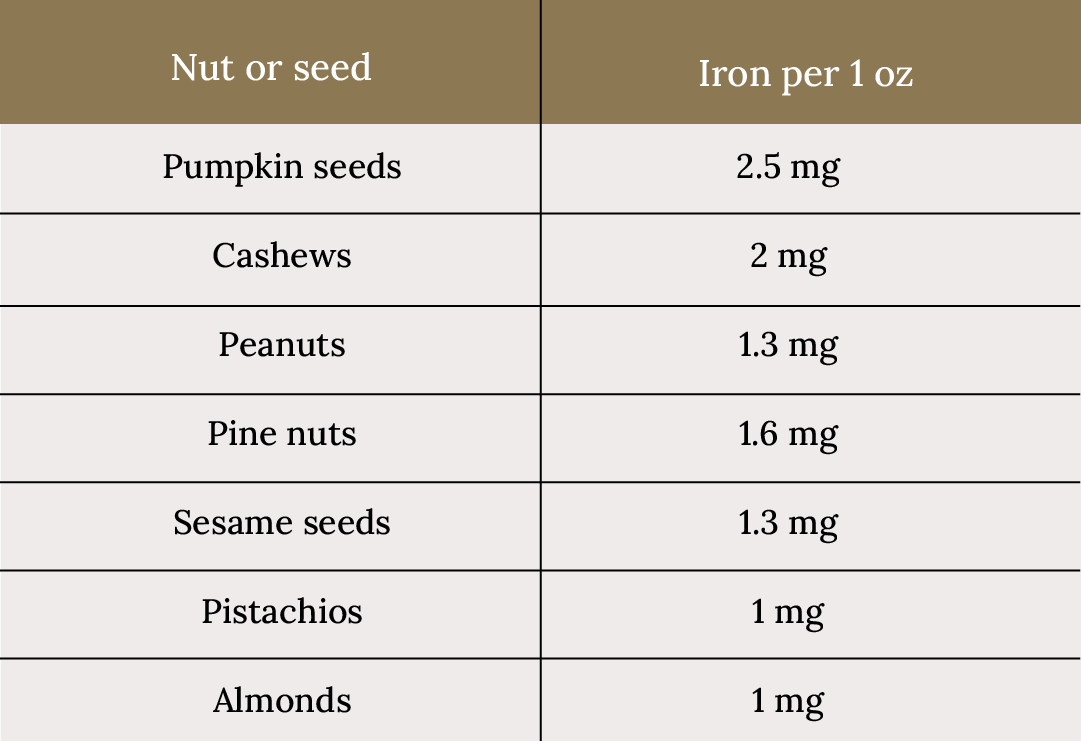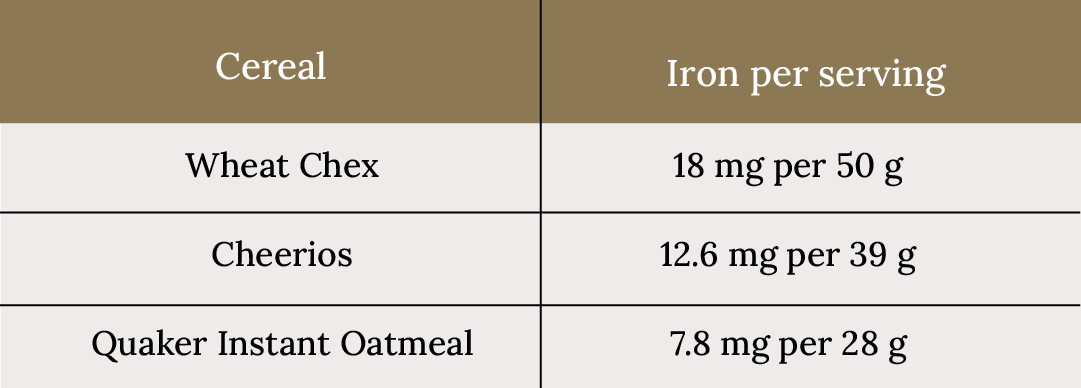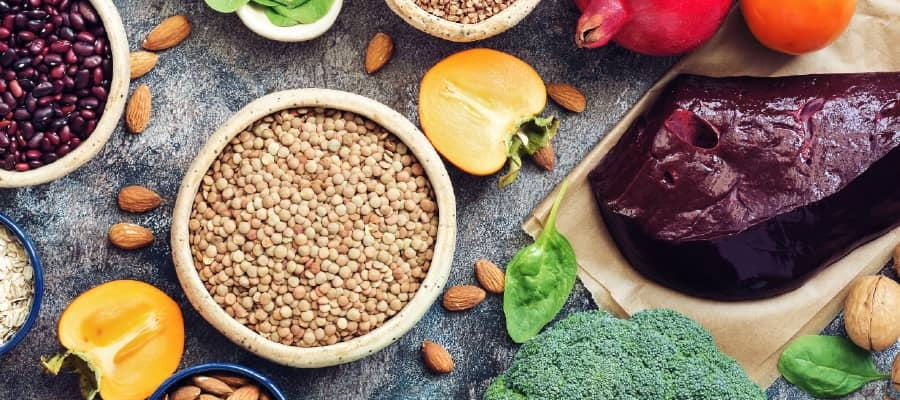Most of us know we need iron, but what about ferritin? Is it the same thing? It’s not, but ferritin and iron do go hand-in-hand.
Ferritin is a blood protein that stores and releases iron into your body,¹ which in turn supports several important processes. You need iron to maintain healthy immune function, to keep your energy up, to breathe, to move and more.²
Although you can’t directly measure how much iron is in your body, because ferritin stores iron, a simple ferritin blood test can indirectly determine whether your iron levels are too high or too low.
Neither high nor low iron is ideal, but while high iron is usually treated medically, low iron can often be addressed through diet. Either way, the goal is to get ferritin levels into a normal range.
What are the consequences of low iron levels?
Low ferritin and iron are often accompanied by symptoms of fatigue and weakness. Over time, low iron levels can contribute to serious long-term consequences such as depression, difficulty fighting infections and even heart problems.³
But how do you boost ferritin levels if they’re low?
The easiest solutions are to eat more iron-rich foods or take an iron supplement.
Read on to learn how much iron you should aim to get each day, plus the best dietary sources of iron, tips for boosting iron absorption and when to consider a supplement.
How much iron do you need every day?
There are many potential reasons for low ferritin levels, including diseases that impair absorption of iron, such as celiac disease, Crohn’s and more.
If you’re dealing with a condition in this category, foods and supplements won’t necessarily help. That’s why it’s important to work with your doctor to identify the root cause of your low ferritin levels before trying to boost them yourself.
The National Institutes of Health, Office of Dietary Supplements suggests the following recommended daily allowances (RDAs) for iron:⁴
- Women, ages 19 to 50: 18 mg
- Women, ages 51+: 8 mg
- Pregnant women: 27 mg
- Lactating women: 9 mg
- Men, ages 19 to 50+: 8 mg
It’s worth noting that your personal needs may be higher or lower than the standard RDAs.
Your RDA will be nearly twice as high if you're a vegetarian because nonheme iron — the only type of iron available from plant foods — is less bioavailable.
This means it's harder to absorb than the heme iron found in meat, fish and eggs.⁵ (Incidentally, while plants only offer nonheme iron, animal foods offer both heme and nonheme.)
For example, a vegetarian woman between the ages of 19 and 51 should aim for about 32 mg of iron per day.
And if you’ve been diagnosed with iron deficiency anemia (a reduced concentration of hemoglobin in your red blood cells that causes fatigue and weakness), you may be directed to take a short-term, high-dose iron supplement before relying on diet alone.
Can you get enough iron from food alone?
Most people can hit their daily quota by eating a varied diet, especially if it includes animal proteins, the only food sources of heme iron.⁶
Heme iron is not only easier to absorb, it also makes it easier to absorb nonheme iron found in plants, eggs and dairy.⁷
What about vegans and vegetarians?
Vegans and vegetarians can get enough iron from food, but may need to pay more attention.
Plant-based diets can be quite healthy,⁸ but they do come with a higher risk of iron deficiency anemia and depleted iron stores. This is particularly true for women who still have their monthly periods.⁹
To get more iron from vegan or vegetarian foods, eat them alongside a source of vitamin C, like red pepper or citrus fruit.¹⁰ Research shows that this enhances the bioavailability of nonheme, or plant-based, iron.¹¹
Iron-rich foods that boost iron and ferritin levels
To work more iron into your diet and boost ferritin levels, here’s a convenient list of some of the most iron-rich foods available, with figures sourced from the National Institutes of Health and the U.S. Department of Agriculture unless otherwise noted.¹² ¹³
Animal proteins
Lean meat, seafood, poultry and eggs contain heme iron, which is the most bioavailable form of iron (they also contain nonheme iron!). These are also a great source of protein and other micronutrients, like B12, that aren’t readily available from plant foods.

Legumes
Legumes — including high-quality soy-based foods like tofu and tempeh — pack an iron punch. Plus they’re packed with other nutrients including fiber, B vitamins, folate, calcium, potassium, phosphorus and zinc.

Nuts and seeds
Just a handful of nuts or seeds provide a meaningful dose of iron, along with heart-healthy, blood-sugar stabilizing fats, fiber and other compounds. Toss them into a trail mix along with raisins and dark chocolate (which also contains iron) for a treat.

Whole grains
Because they undergo less processing than refined grains, whole grains maintain many of their naturally occurring minerals, including iron. Combine a whole grain with your favorite cooked iron-rich veggies, herbs and spices and a glug of olive oil for a healthy side dish.

Vegetables
Dark leafy greens and certain other vegetables can add meaningful levels of iron to your diet, especially if you incorporate a few veggies into every meal. Many vegetables also contain vitamin C, which enhances nonheme iron absorption.

(Wondering why spinach isn’t on this list? While it’s true that it contains quite a lot of iron, it also has high amounts of oxalic acid that make most of the iron nearly impossible to absorb.)
Fruits
While most fruits are relatively low in iron, there are a few standouts. Consider adding some dried fruits and nuts to your next bowl of oatmeal for an added iron boost.

Fortified cereals
While cereal often gets a bad rap for being dessert in disguise, there are several wholegrain, low sugar options available that are fortified with up to 100% of your daily iron RDA. Some examples of fortified cereals include:¹⁴ ¹⁵ ¹⁶

Other pantry staples
These two pantry staples are surprising sources of iron — consider using them in your next batch of healthy-ish brownies or cookies instead of refined sugars and milk chocolate.

Who should consider iron supplements?
Supplements generally aren’t recommended unless you have anemia caused from iron deficiency.¹⁷ ¹⁸
Excess iron can damage organs and cause side effects such as constipation and heartburn, so it’s important to follow your healthcare provider’s dosing instructions and to pay attention to the form of iron they suggest, as there are many available (ferrous sulfate, ferrous fumarate, ferrous gluconate, etc.) and not all will be ideal for you.
Your optimal dose will depend on your baseline hemoglobin, serum iron and ferritin levels.
According to some estimates, it can take three to six months at a daily dose of 100 to 200 mg of elemental iron per day to replenish your iron stores. Symptoms of iron deficiency anemia often ease sooner, within a week or month.¹⁹ ²⁰
Other research suggests that intermittent iron supplementation (as opposed to daily) may bring the same benefits with fewer side effects.²¹
Higher amounts are usually spread across two daily doses for better absorption.²² Iron absorbs best on an empty stomach, but taking it this way can create digestive upset. If this is the case for you, it’s okay to take your doses with meals, and even better to take them with meals containing vitamin C (to aid absorption), while avoiding milk, caffeine, antacids and calcium supplements (which can hinder absorption).²³
Summary
Boosting your ferritin levels and preventing, managing or reversing conditions like iron deficiency anemia can often be accomplished by eating enough iron-rich foods.
Even if your ferritin levels are normal, the iron-rich foods featured in this story support overall health and wellbeing and offer a range of other nutrients.
If your iron levels are very low, as is the case with iron deficiency anemia, you may also need to take a supplement. In this case, consulting a healthcare professional will help you determine your optimal dose and avoid unpleasant side effects.












.svg)




